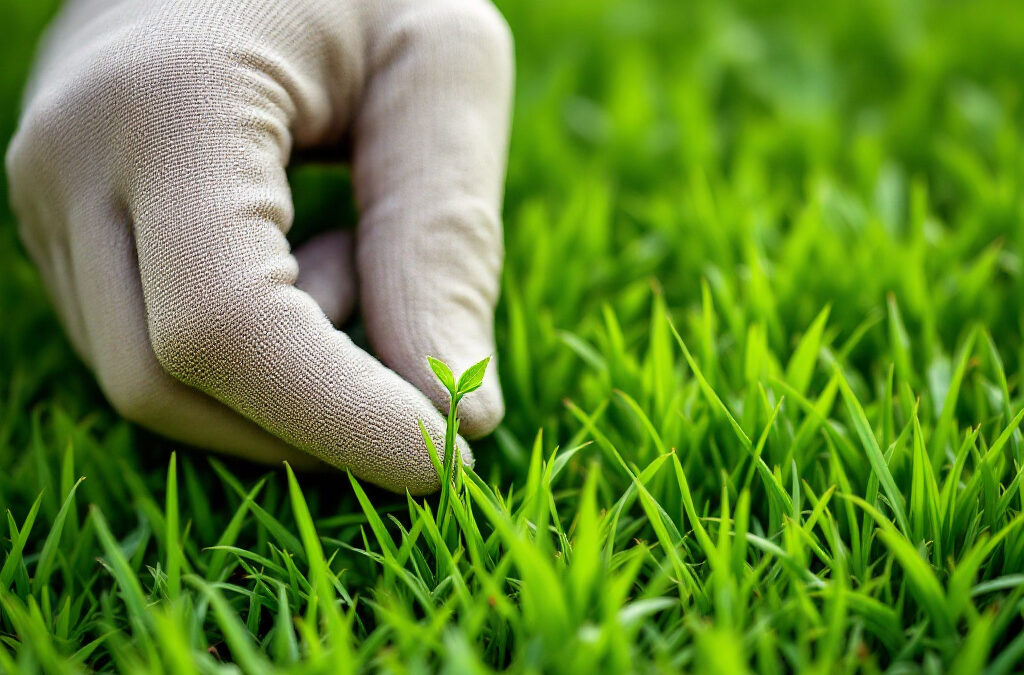I. Introduction
Effective weed control is essential for maintaining the health and aesthetics of commercial lawns. Large properties often face unique challenges due to their expansive areas and the diverse types of grasses and plants involved. This article explores proven weed control solutions to keep commercial landscapes beautiful and thriving.
II. Understanding Common Weeds in Commercial Lawns
A. Types of Weeds Typically Found in Large Commercial Lawns
Commercial lawns are commonly infested with various types of weeds, each presenting its own challenges. Broadleaf weeds, such as dandelions and clover, not only disrupt the uniform appearance of a lawn but also compete for nutrients. Grassy weeds like crabgrass often establish rapidly and are notoriously hard to eliminate, while perennial weeds such as thistle and bindweed can persist year after year if not managed properly.
B. Identifying Weeds: Visual Identification and Characteristics
Identifying weeds is crucial for effective management. Knowledge of the visual characteristics—leaf shape, growth patterns, and flowering periods—helps property managers implement timely treatments. Familiarity with common weeds enables quicker intervention before they can spread.
C. Impact of Weeds on Commercial Lawn Health and Aesthetics
Weeds detract from a lawn’s appearance and can lead to detrimental impacts on soil health and turf vitality. They steal vital nutrients, water, and sunlight from beneficial plants, potentially leading to patches of dead grass. Therefore, promptly addressing weed issues is vital for maintaining a lush and healthy commercial lawn.
III. Preventative Weed Control Strategies
A. Importance of Healthy Soil and Lawn Health
Healthy soil is the foundation for a vigorous lawn. Conducting regular soil tests to monitor pH and nutrient levels ensures that the lawn receives the necessary care to thrive. Strong grass minimizes the likelihood of weeds overtaking the area.
B. Best Practices for Lawn Maintenance
Regular lawn maintenance practices help create an environment where weeds struggle to survive. Aeration allows air, water, and nutrients to penetrate deep into the soil. Mowing to the correct height and frequency promotes thick grass that can outcompete weeds for resources.
C. Effective Mulching Techniques
Mulching is an excellent way to suppress weeds while enhancing the visual appeal of the landscape. Organic mulch like wood chips prevents weed growth by blocking sunlight and regulating soil moisture. Regularly replenishing mulch layers is essential for ongoing effectiveness.
D. Utilizing Weed Barriers and Ground Covers
Weed barriers serve as a physical line of defense against weed intrusion. These materials can range from fabric membranes to natural materials like straw. Additionally, planting ground covers can enhance aesthetics while choking out weeds.
IV. Chemical Weed Control Solutions
A. Overview of Herbicides: Types and Applications
Herbicides play a pivotal role in the fight against invasive weeds in commercial lawns. Pre-emergent herbicides prevent weed seeds from germinating, while post-emergent options target weeds that are already established. Unsurprisingly, selecting the right type is critical to achieving effective results.
B. Application Techniques and Timing
Correct application timing enhances the efficacy of herbicides. For pre-emergents, early spring treatments before weed seeds germinate are ideal, whereas post-emergents should be applied when weeds are actively growing. Employing precision application techniques minimizes waste and optimizes coverage.
C. Safety Precautions and Environmental Considerations
Using chemical treatments requires strict adherence to safety guidelines. Proper gear, awareness of weather conditions, and following product labels help protect both users and the environment. Additionally, being cautious about runoff into nearby bodies of water is essential in maintaining ecological balance.
V. Organic and Eco-Friendly Weed Control Options
A. Overview of Organic Herbicides
With an increasing demand for sustainable practices, organic herbicides present a viable alternative. These products are derived from natural ingredients, often targeting weeds without harming beneficial insects and the broader environment.
B. Natural Remedies for Weed Control
Natural remedies are easy to implement for small-scale weed issues. Solutions such as vinegar and salt can effectively kill unwanted plants when applied carefully. Boiling water is another simple method that can instantly eliminate weeds while avoiding chemical residues.
C. Benefits of Organic Solutions for Commercial Properties
Opting for organic solutions not only benefits the environment but also enhances brand reputation. Businesses that promote eco-friendly practices attract customers who prioritize sustainability, creating a positive image for the property.
VI. Integrated Weed Management (IWM)
A. Holistic Approach to Weed Control
Integrated Weed Management combines various strategies to achieve optimal control over weeds. By assessing the unique needs of each lawn and surrounding environment, property managers can develop tailored approaches to weed management.
B. Combining Chemical and Organic Methods
Utilizing both chemical and organic methods often yields the best results. For instance, using pre-emergent herbicides in conjunction with organic remedies creates a comprehensive plan that targets different growth phases of weeds.
C. Monitoring and Assessment Techniques
Regular monitoring is critical to evaluate the effectiveness of weed control measures. Recording changes in weed populations and assessing lawn health allows adjustments to be made in real-time, ensuring continuous improvement.
VII. Scheduling and Frequency of Weed Control
A. Seasonal Considerations for Effective Weed Management
Understanding the seasonal nature of weed growth is vital. Different weeds thrive in different seasons, making it crucial to align weed management practices with those growth patterns. Spring and fall brand the peak seasons for both growth and control efforts.
B. Recommended Maintenance Schedules for Large Commercial Lawns
Creating a comprehensive maintenance schedule guarantees that weeds are addressed regularly. Monthly reviews and seasonal lawn care assessments, including fertilization and aeration, should coordinate effectively with weed control measures for maximum efficacy.
VIII. Case Studies & Best Practices
A. Success Stories of Effective Weed Control in Commercial Properties
Illustrating successful weed control initiatives can inspire confidence in strategic planning. For instance, a large corporate campus that adopted a scheduled IWM approach reported a 75% reduction in weed populations, resulting in enhanced aesthetic appeal and lawn health.
B. Lessons Learned from Failed Weed Management Initiatives
Successful management often involves learning from mistakes. Case studies can reveal common pitfalls, such as using one method exclusively or ignoring optimal timing, thus providing essential lessons for future weed management strategies.
IX. Conclusion
In summary, proactive weed control is crucial for the maintenance of large commercial lawns. By implementing a mix of preventative strategies, chemical or organic options, and regularly assessing the lawn’s health, property managers can ensure a pristine lawn. Moving forward, it’s essential to develop a tailored weed management plan based on the insights gathered.
Don’t wait— call us now


